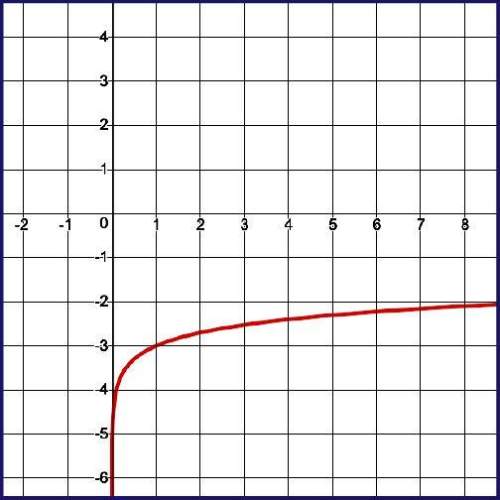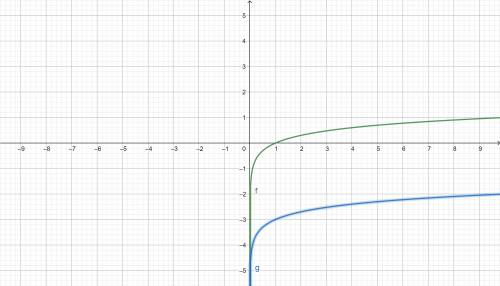
Mathematics, 05.10.2019 04:30 woebrooke11
Choose the function to match the graph.
the graph starts at the bottom of the y axis and rises along the y axis and curves to go through the point one comma negative three and continues to the right, leveling out around y equals negative two.
f(x) = log x − 3
f(x) = log x + 3
f(x) = log (x − 3)
f(x) = log (x + 3)


Answers: 1


Other questions on the subject: Mathematics

Mathematics, 21.06.2019 22:30, hala201490
Avery’s piggy bank has 300 nickels, 450 pennies, and 150 dimes. she randomly picks three coins. each time she picks a coin, she makes a note of it and puts it back into the piggy bank before picking the next coin.
Answers: 1



Mathematics, 22.06.2019 03:00, kittenlover5031
In this problem, we explore the effect on the standard deviation of multiplying each data value in a data set by the same constant. consider the data set 14, 6, 8, 15, 15. (a) use the defining formula, the computation formula, or a calculator to compute s. (round your answer to one decimal place.) s = 4.28 (b) multiply each data value by 3 to obtain the new data set 42, 18, 24, 45, 45. compute s. (round your answer to one decimal place.) s = 12.83 (c) compare the results of parts (a) and (b). in general, how does the standard deviation change if each data value is multiplied by a constant c? multiplying each data value by the same constant c results in the standard deviation remaining the same. multiplying each data value by the same constant c results in the standard deviation being |c| times as large. multiplying each data value by the same constant c results in the standard deviation increasing by c units. multiplying each data value by the same constant c results in the standard deviation being |c| times smaller. (d) you recorded the weekly distances you bicycled in miles and computed the standard deviation to be s = 3.8 miles. your friend wants to know the standard deviation in kilometers. do you need to redo all the calculations? yes no given 1 mile ≠1.6 kilometers, what is the standard deviation in kilometers? (enter your answer to two decimal places.)
Answers: 1
You know the right answer?
Choose the function to match the graph.
the graph starts at the bottom of the y axis and...
the graph starts at the bottom of the y axis and...
Questions in other subjects:

Social Studies, 15.12.2020 14:00

Mathematics, 15.12.2020 14:00



English, 15.12.2020 14:00


Mathematics, 15.12.2020 14:00

Social Studies, 15.12.2020 14:00


Spanish, 15.12.2020 14:00




